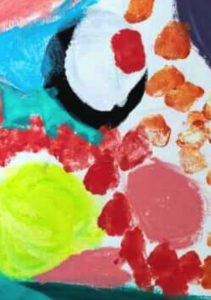Aspie Anxiety in the Time of COVID 19
“…nearly half of those with ASD also have some sort of anxiety by adulthood.” Louise Bedrossian, 2015 Fear and Our Brains After our brains respond to fear there is […]
My WordPress Blog
“…nearly half of those with ASD also have some sort of anxiety by adulthood.” Louise Bedrossian, 2015 Fear and Our Brains After our brains respond to fear there is […]

“…nearly half of those with ASD also have some sort of anxiety by adulthood.” Louise Bedrossian, 2015
Fear and Our Brains
After our brains respond to fear there is a period of de-activation or calming down. In individuals on the Spectrum the initial response to fear results in less of an initial activation. Bedrossian states, “this suggests that people with ASD are slower to differentiate safety vs. danger.”
Brains, Fear and Anxiety
Put another way: Aspie’s brains develop differently. Neurotransmitters develop differently. Brains respond differently to certain cues. Because individuals on the Spectrum have some difficulty reading cues for fear and for safety this may lead to anxiety.
Aspies react differently
Aspie’s have difficulty perceiving social cues. Aspies experience sensory sensitivity. Aspies find change to be difficult. Enter the Pandemic! Picture yourself as an Aspie student: middle school,
high school, college level. Anxiety for Aspies might be triggered by: crowded places., loud sounds, smells, change in routing, changes that are part of everyday in life in school and college settings.student
And In the Time of COVID 19
Imagine that you are a student who has had a change in a learning environment due to the Pandemic. Imagine that you are a student who has had a change in living situation as well. Both of these can be anxiety producing especially for Aspies.
Consider the class format has changed, assignments are different, group learning has changed. Other anxiety producing triggers which include learning how to schedule one’s time that was previous scheduled by virtue of the learning environment: getting to a class, etc.
Additionally Aspies may or often experience anxiety around socially interacting with others: meeting with advisors, teachers/ professors, other student s and study groups.
We are Here to Help
Connect Therapies offers support in the form of individual therapy to learn coping strategies. We are here to help you lower anxiety during this time of change. We understand that changes in your daily routine, living and study situation and changes in interaction with others can cause anxiety.
I recently found a new resource that offers virtual support for Aspies and their families. Take a look : https://www.aane.org/
Contact Connect Therapies counselors at 970 286 0054
or via email: sally@connecttherapiesllc.com.
Or fill out the online contact form found under the Contact Us tab.
Filed Under: adult ADD, anxiety, ASD, Autism, COVID, natural supports, Pandemic, parent support, stess relief, Stress, therapy Tagged With: #anxiety, #Aspie, #autism, #Boulder, #college, #connecttherapies, #Highland, #learncoping, #onlineschool, #pagosa Springs, #remotelearning, #social anxiety, #telluride, ASD, coping
A together activity for families with an autistic child. Of course we prepare for change when a child on the Spectrum is part of the equation, sort of goes without saying, right? In addition to explaining the upcoming change, then wash, rinse, repeat and explain again, always using simple and clear terms, here is an […]



 A together activity for families with an autistic child.
A together activity for families with an autistic child.
Of course we prepare for change when a child on the Spectrum is part of the equation, sort of goes without saying, right?
In addition to explaining the upcoming change, then wash, rinse, repeat and explain again, always using simple and clear terms, here is an activity that may offer a fun way to prepare for change.
You will be making a visual schedule in a book format. This is a visual support/ a form of visual schedule in a storybook format.
Materials you will need:
Three ring binder
Stapler
Copy paper to fit in the binder
Hole punch
Glue sticks
Scissors
magazines, old calendars, greeting card photos/ anything you can cut up that has images of activities
a container to hold images
Prepare ahead of time:
Staple together enough pages to include most major activities of the day
Take the same amount of page and place them in the three ring binder (hole punch ahead of time or make that repetitive activity a part of the book making)
Cut or tear pictures from magazines or other sources of the activities during a daily schedule.
Glue the images onto pages in the binder. If you don’t have a binder a second set of pre-stapled pages will do. But a binder might allow some flexibility during the process: allowing for frustrations and for changes in perspective during the process. Speaking of frustration. Your child may likely find some images that do not pertain to the daily visual schedule. Those can be glued into the pre-stapled pages.
Keeping that structured daily routine is part of survival at home. Now you have a visual storybook of the daily routine. As part of getting ready for a change in routine you can add a new page with an image of the new activity.
Get ready for changes in small steps and then wash, rinse repeat by explaining. Use the visual storybook to reinforce the explanation. It can be part of the getting ready process.
I hope you enjoy making a visual schedule. Let me know how your activity went. Post an image of your visual journal or of the activity in progress. Have fun!
Filed Under: ASD, Autism, creativity, journal, parent support, parenting, Uncategorized Tagged With: #arttherapy, #autism, #autismbehavior, #autismparenting, #autismsupport, #connecttherapies, #familyrules, #schedule, #self-regulate, ASD, Aspergers, visualschedule
Brain illustration Highly functioning autistic individuals might be described as “aware and can’t do anything about it” when it comes to certain areas of living. They are highly functioning in many areas but of highly functioning socially. The job of parents becomes not to teach social graces but to teach them responsibility so as not […]

 Brain illustration
Brain illustration
Highly functioning autistic individuals might be described as “aware and can’t do anything about it” when it comes to certain areas of living. They are highly functioning in many areas but of highly functioning socially. The job of parents becomes not to teach social graces but to teach them responsibility so as not to put themselves in dangerous situations.
First, a little brain science.
The cerebellum has more neural connections than any other part of the brain. The cerebellum controls motor activity, sensory-motor activity, balance, memory, and facial expression to name a few. If your cerebellum is “overactive” you may experience involuntary movement. If your cerebellum is “under-active” your feet may forget to move. One can expand that idea of overactive and under-active to the various areas controlled by the cerebellum.
Second, internalized rules.
So let’s say as a family parents come with sets of rules. Parent #1 has her/ his family rules. Parent #2 has her/his family rules. I am speaking of internalized rules not formal, do this-don’t do that posted on the fridge type rules. We all com with internalized rules that are the result of our “internal mothers (primary caregiver).” These are things that we just assume to be true about how to live life in a family setting. Some have more than others. Some are well defined and “loud” while some are subtle in volume or tone and some are pretty muddy. We all have some. These are the things that we just assume to be true about how to live life in a family setting. We act out the internalized rules based on situations that come up day to day.
As a family grows the two parents have many experiences, opportunities to forge new family rules by combining , refining , getting rid of internal rules. Some times this happens formally, sometime almost by osmosis and sometimes, well “loudly.”
And third, new family member.
Along comes a new family member who is high functioning on the Spectrum. The internalized rules may no longer work. You know, those auto-pilot things we say, those auto-pilot responses that just seem to just happen. The internalized rules may not fit this new situation. “What we know is what we know.” And “what we know’ in this case probably isn’t going to work. Yet, here we are. We act out rules to solve problems. Therein lies the opportunity. This is the opportunity: to rewrite the family rules. This is the opportunity to make rules appropriate to the new situation, the new family. The family deserves and will need new rules.
Taking time to visit your internal family rules, your internal mother and to not allow her to auto-pilot how you relate to your child on the Spectrum. Take time to create new family rules together and verbalize them. Put in to action rules with flexibility that will address the social wellbeing and the safety of your child on the Spectrum.
More about rules in a future blog. For now I hope you find this to be food for thought. If you are struggling with “parenting on the Spectrum” and would like support please check out of Resource Page here at Connect Therapies LLC or give us a call. We are here to offer hope and support.
Filed Under: ASD, Autism, parent support, parenting Tagged With: # parenting, #autism, #autismbehavior, #autismparenting, #autismsupport, #cerebellum, #familyrules, #parentingsupport, ASD, Aspergers